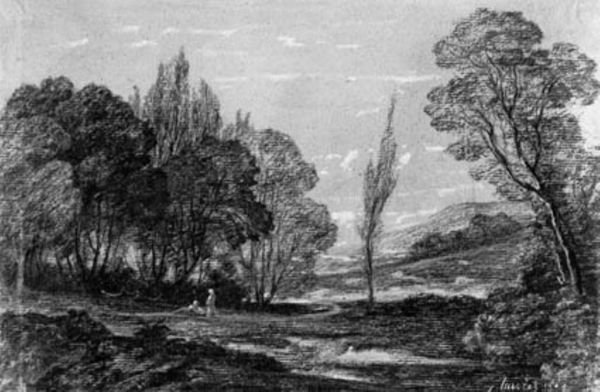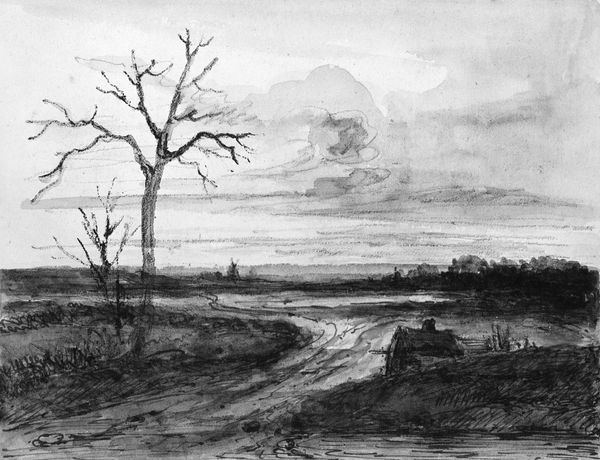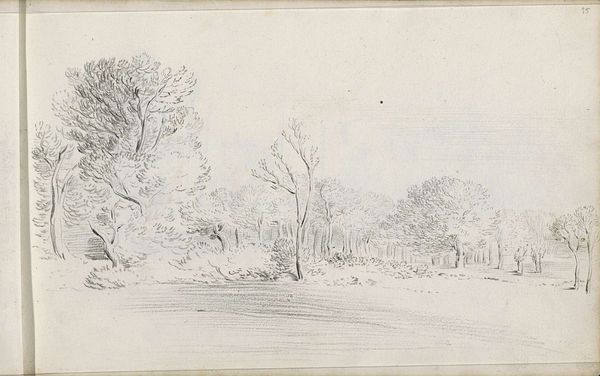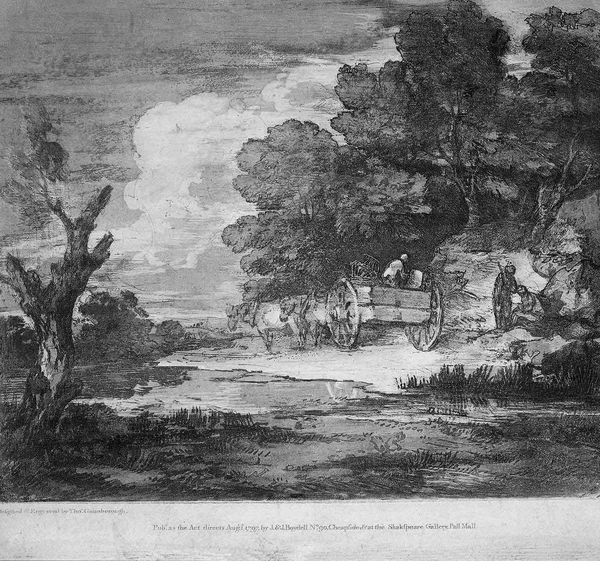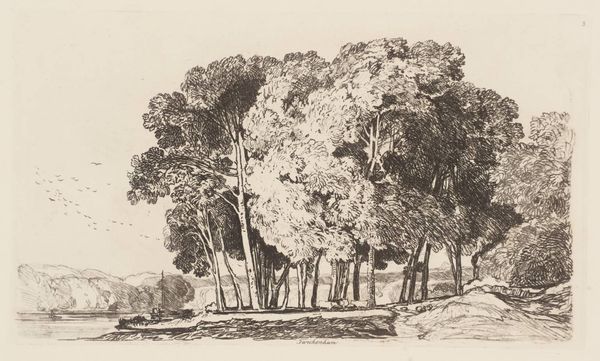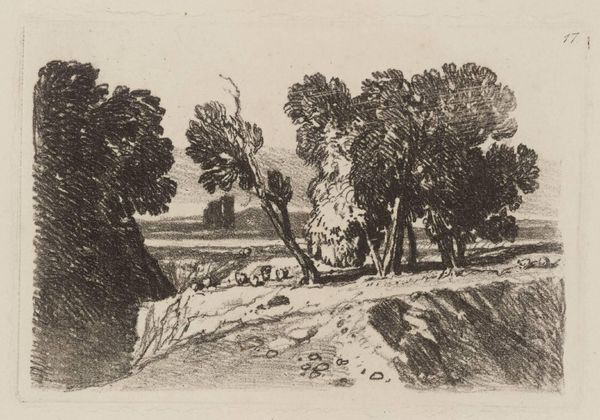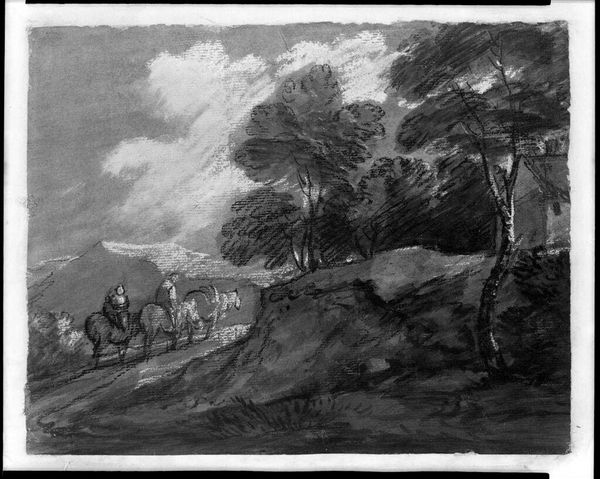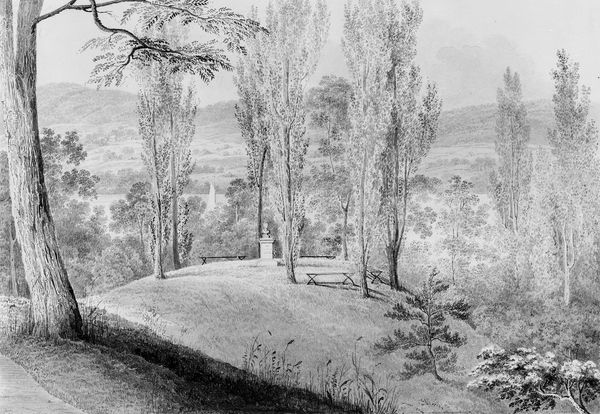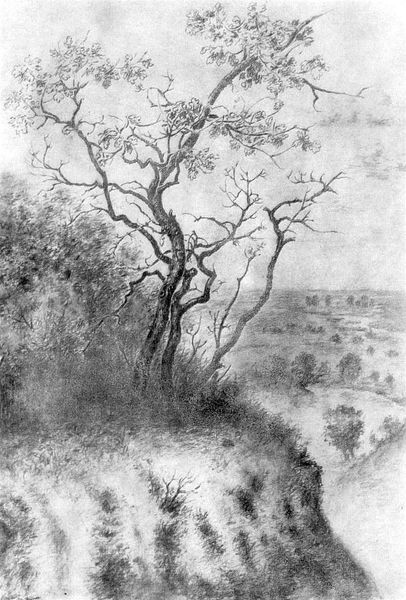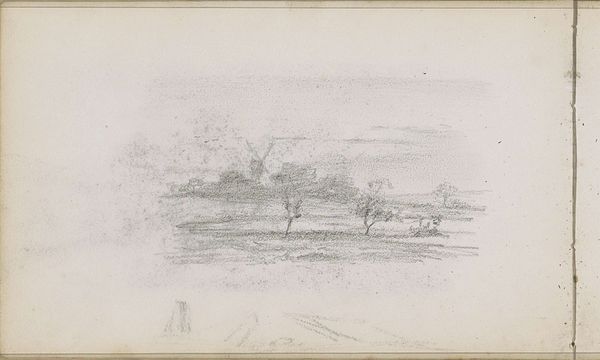
En allé der snor sig langs en dal; i forgrunden til venstre sidder to herrer på en lang stenbænk, ved siden af står et par 1762 - 1830
0:00
0:00
drawing, pencil, charcoal
#
drawing
#
landscape
#
charcoal drawing
#
figuration
#
romanticism
#
pencil
#
charcoal
Dimensions: 502 mm (height) x 410 mm (width) (bladmaal)
Curator: This intriguing drawing from the Danish Golden Age, created sometime between 1762 and 1830, is attributed to Heinrich Plötz. The work, whose title translates roughly to "A lane winding along a valley; in the foreground to the left sit two gentlemen on a long stone bench, next to it stand a couple," uses primarily charcoal and pencil. What are your initial thoughts? Editor: My first impression is the almost spectral quality of the figures against the very loosely rendered landscape. The dark wash of the trees against the expansive sky creates this interesting balance between the concrete and the ethereal. Curator: Absolutely. I think it's interesting to note how the drawing exists within a broader context of the rise of Romanticism in Europe. This artwork mirrors a changing societal emphasis on the individual and subjective experience, visible in the figure’s contemplation of nature. We see society's elite engaging in what was a burgeoning practice: leisurely appreciation of landscape. Editor: Yes, but this "leisurely appreciation" also conveniently excludes those who would be labouring in such landscapes! These figures appear distanced from the realities of rural life, creating a pictorial space reserved for the privileged. Their positioning along the fence is interesting. Are they part of the landscape or apart from it? Curator: That tension speaks volumes, doesn’t it? It reflects a period where access to nature became another marker of class and status. You see estates and properties developed with views and ‘picturesque’ elements specifically to enable this viewing. What appears to be a casual scene is steeped in social codes. Editor: And that heavy contrast further separates them from it. The stark, almost melancholic feel emphasizes that remove. We need to read beyond the surface of these supposedly idyllic scenes to unpack the historical and social realities encoded within. Curator: Precisely. Viewing the drawing as a document of cultural values, rather than just an aesthetic object, reveals these complex layers of meaning. The act of sketching itself, something Plötz did quite often, was a performative one. What appears free and spontaneous was also quite controlled by conventions and the very clear structures of society. Editor: Thank you, these critical insights regarding historical context shift our perception, from a simple landscape sketch into a document ripe for investigation. Curator: My pleasure. This single sketch gives us so much to consider when reflecting on both landscape art and society’s power dynamics.
Comments
No comments
Be the first to comment and join the conversation on the ultimate creative platform.

